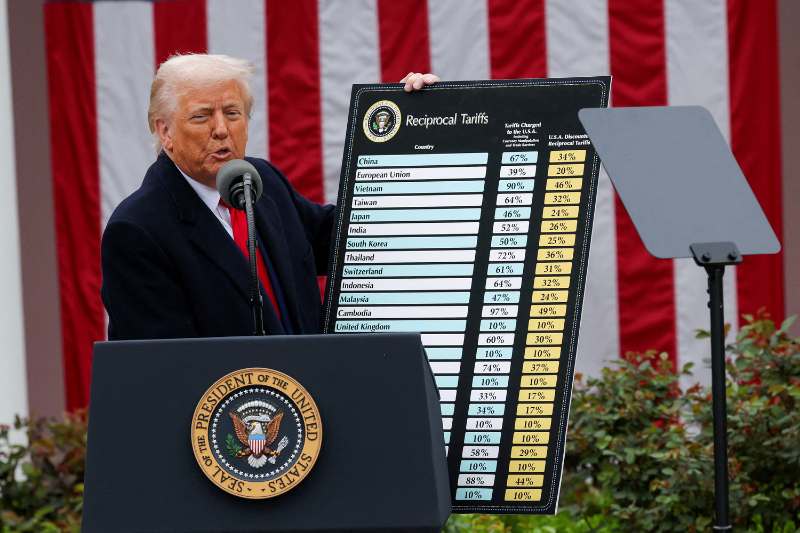
In a significant shift for American trade policy, the U.S. Court of International Trade has halted a series of tariffs imposed by Trump under emergency powers. The court determined that the former president exceeded his authority by invoking the International Emergency Economic Powers Act (IEEPA), delivering a setback to one of Trump's key economic strategies.
This ruling emerges amidst increasing scrutiny of tariffs, the extent of presidential power, and the judiciary's role in trade enforcement.
Trump Tariffs Halted by U.S. Court of International Trade in Landmark Decision
The ruling centers on Trump tariffs that imposed a 10% duty on a broad array of imports. The U.S. Court of International Trade, commonly referred to as USCIT, concluded that the former president misapplied IEEPA by extending its use beyond its intended scope.
The court emphasized that while IEEPA permits rapid economic measures during national emergencies, it is not intended for the broad restructuring of tariff policy.
Court Blocks Tariffs Citing Misuse of Emergency Powers Under IEEPA
The case specifically contested Trump’s application of IEEPA to justify tariffs on nations such as China, Mexico, and others. The court ruled that these actions did not have a direct link to a valid national emergency, rendering them illegal under the statute.
Legal analysts view this as one of the most significant challenges to presidential trade authority in recent history. It underscores that the president cannot exploit emergency powers as a means to implement extensive economic policies like tariff imposition.
Tariff Update: Implications of the Ruling on Current and Future Trade Policies
This ruling does not eliminate all Trump tariffs. It specifically pertains to those enacted under IEEPA. Other tariffs, such as those justified by national security concerns (like Section 232 tariffs on steel and aluminum), remain unaffected.
Nevertheless, this ruling contributes to ongoing debates regarding the necessity to reassess and potentially reform the mechanisms through which U.S. presidents impose tariffs.
US Court of International Trade Ruling Provokes Responses from Trade Court Analysts
Following the ruling, responses came in from various quarters. Business organizations expressed approval of the decision, arguing that tariffs had unjustly increased expenses for U.S. firms. Legal experts pointed out that the US trade court has now clarified: tariff policy must adhere to legal constraints.
Observers of the trade court think this ruling could shape how future administrations apply IEEPA and similar statutes. It also establishes a precedent for more rigorous judicial scrutiny of executive trade actions.
Katie Miller in the Limelight as Legal Advisory Panel DOGE Initiates Amid Tariff Discussion
Although not directly related to the tariff ruling, former Trump spokesperson Katie Miller has made headlines again. She has been appointed to the newly established Department of Government Efficiency (DOGE), an advisory body focused on regulatory reform. While unrelated, her return to the political arena coincides with a renewed discussion about Trump-era policies.
Liberation Day Tariffs and Wider Global Trade Issues
Some social commentators have labeled the ruling as a sort of “Liberation Day” for trade. The term “liberation day tariffs” has started trending online, symbolizing the perceived lifting of what many considered onerous trade restrictions.
Although the actual Liberation Day holiday is not connected, the metaphor has gained traction, particularly among critics of the Trump tariffs who view this ruling as a fresh start for more balanced and lawful tariff enforcement.
Tariff Policy and Market Response: NVIDIA After Hours Among Winners
Financial markets responded favorably to the announcement. Following the ruling, major indices recorded gains. Notably, NVIDIA experienced a spike in after-hours trading. While NVIDIA is not directly associated with the tariffs in question, investors interpreted the court’s ruling as an indication of regulatory stability and reduced trade disruptions.
Analysts suggest that diminished uncertainty in trade policy could enable the tech and manufacturing sectors to restore confidence.
Trump Tariff Overturn Emphasizes the Role of USCIT and Trade Court Limitations
The ruling reinforces the significance of USCIT in monitoring executive authority. The U.S. Court of International Trade was established specifically to resolve legal conflicts concerning trade regulations, customs duties, and tariffs.
This verdict highlights that even actions taken by the president must be legally justified. It also emphasizes the necessity for Congress to take a more proactive stance in developing long-term tariff strategies.
What Lies Ahead for Tariff Developments and Presidential Power?
This is not the concluding chapter. The Biden administration is anticipated to contest the ruling, although it has distanced itself from many of Trump’s extensive tariff strategies. The administration has generally supported more targeted trade enforcement.
As discussions progress, this case is likely to become a pivotal element of tariff news and legal scrutiny for years to come.
Final Thoughts: Court of International Trade Establishes Tariff Boundaries
The Trump tariffs case has now become a significant ruling in the ongoing narrative of American trade politics. The court’s message is unequivocal: presidents cannot bypass legal constraints, even under the guise of national emergency.
For businesses, legislators, and international trade partners, this ruling serves as a reminder for transparency, legality, and moderation in the implementation and management of tariffs.